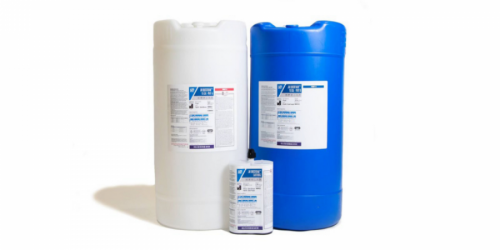Q&A Forums
Spray foam on underside of roof sheathing Post New Topic | Post Reply
| Author | Comments |
|---|---|
|
Edward Wisniewski
Posted: May 24, 2015 08:47 AM
|
Spray foam on underside of roof sheathing
I'm getting conflicting information as to whether or not I should be using closed cell foam or open cell foam on the underside of my roof sheathing. Here is my situation:I’m constructing a new home along the Rhode Island shore. The attic will be a conditioned space and I’m planning to apply spray foam insulation to the underside of the roof sheathing. The roofing materials are installed and consist of Timberline shingles and full coverage Ice and Water barrier (the entire roof). I’ve been told by one installer to use closed cell foam and another to use only open cell foam. The one recommending the open cell foam claims that my Ice and Water barrier forms a vapor barrier on the outside of the sheathing and that by using closed cell foam below I’m creating another second vapor barrier below. The double vapor barrier being the question. The other firm says that there is no problem with that situation. I’m wondering how this is different from sidewalls where someone may have used the Zip System sheathing and then applied closed cell foam to the wall cavity – again seems like a double vapor barrier. The other concern with closed cell in the attic is that I will not be able to see a roof leak if I ever get one. The closed cell foam will lock in the moisture and lead to problems. Any recommendations - what is general practice with this? I can’t be the first to encounter this. |
|
mark moyer
Posted: May 25, 2015 06:25 PM
|
6-7" closed cell foam with great attention given to the truss heel/top plate assembly... you do not stop leaks from the inside...closed cell or open cell or filterglass, or shreddepaperulose, if it leaks it will show up somewhere within the assembly...usally down towards the heel with the foam applications... water is a biatch double vapor barriers???egad,,,got me tremblein just thinkin about it...got me the vapors for sure!!! |
|
Jeff Bailey
Posted: May 26, 2015 09:55 AM
|
The Biggest issue here is people throw the term "vapor barrier" around too much. Closed Cell Spray Foam is a Class II Vapor Retarder NOT Vapor Barrier. A Class II Vapor Retarder allows vapor to pass through it slightly, but not such a low amount of moisture it is considered water proof( 1 perm or less at the proper thickness).Grace Ice and water shield is a Class I Vapor Retarder which allows pretty much no Moisture or Vapor to pass through it( .05 perms).The most important thing you need to look at is how they are applied. In this case, we have grace fully adhered to the substrate ( assumed as OSB) then if closed cell is to be applied, that would be fully adhered to the underside of the substrate ( no air space). It would be next to impossible in order for the substrate to become saturated and rot out from a leak as you need air to make wood rot ( look at a log that's been the bottom of a river for years). Closed Cell Foam has been applied underside of roof decks since the late 60s early 70s and to my knowledge i have not seen or heard of a rotted substrate under and conditions closed cell foam was applied. ( If anyone has please contact me with evidence) That being said, Open Cell is a great product as well, however in your case you need to make absolutely sure you have the correct ventilation system/ air ex-changer in place to not allow the interior moisture to travel into the open cell and saturate it, releasing that moisture at a later date back onto you ceiling. This is what happens to fiberglass and cellulose all the time! I feel Air-Ex-changers are the most important part of our Building Science Training's . Hope this helps! |
|
Billy Adams
Posted: Jun 03, 2015 05:30 AM
|
|
|
Mark Mouton
Posted: Jun 03, 2015 09:09 AM
|
I'm in southeast Texas, hot and humid. We have to deal with moisture drive in the summer trying to keep moisture out of the house, putting vapor barriers to the outside of the structure. Question;If I'm insulating the floor of an existing house on pier and beam construction, will 2" of 2-lb closed cell sprayfoam be enough to keep moisture from getting to the wood floor in the summer with 90+ degree temps and 90+% humidity with humidity levels in the house being at 50-55% ? |





























